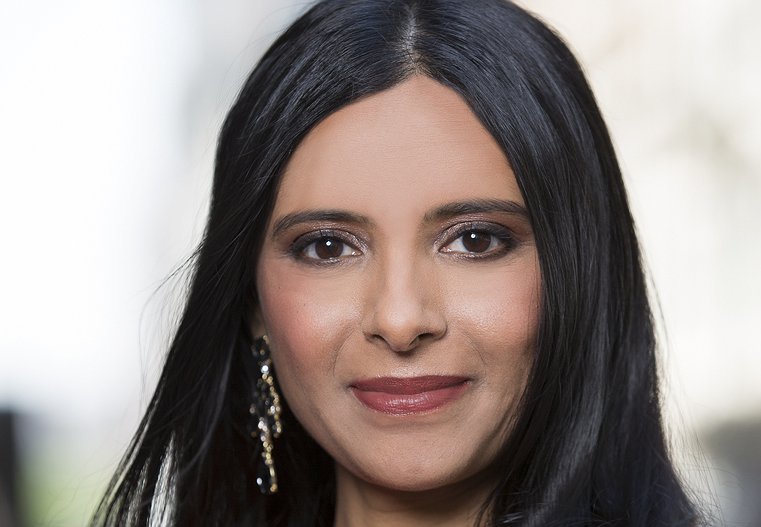OpenAP is gathering momentum as new alliances and developments set the stage for greater growth. The advanced advertising company is engaged in some new initiatives and alliances that are expanding its strength as a cross-platform measurement solution.
There have been a range of new developments in the past year, and more are in the works, said the company's CEO David Levy. "OpenAP has been, from the inception, focused on centralizing the process for television publishers around audience activation," he noted, adding that it measures digital with linear television to enable a consistent way to create an audience.
This offers a consistency in the data, unifying results. The company's ultimate goal is to create an industry standard for audience-based cross-platform measurement.
To manage all the disparate data, OpenAP introduced its OpenID solution about eight months ago. "It is our own identity framework and identity spine that we use for all of that audience activation," Levy explained. It's the backbone by which OpenAP can seamlessly interweave de-duplicated data sources for campaigns.
After launching OpenID as a framework, the company then debuted XPM Measurement, which gives users the ability to pool and normalize audiences "through OpenAP. And it allows them to "transact that [audience] across any broadcasting publisher today," Levy said. "You can actually get de-duplicated reach and frequency not just across all of your publishers but also across platforms, which has really been an elusive thing across television."
This has been a quiet initiative. OpenAP has worked directly with all publishers on one platform. There has been a lot of focus on guaranteeing that all the internal systems are integrated and in sync to ingest and process the data into one central identifier.
ViacomCBS is one of OpenAP's investors. For Radha Subramanyam, President and Chief Research and Analytics Officer, CBS Corp., it is critical to prove the value of broadcast television in conjunction with all of the linear-originated programming on other platforms.
"As audiences seek programming they like, there are more opportunities for viewing. We need to capture and standardize the collection of all viewing on any platform, and OpenAP is a way to do move the process forward," Subramanyam said.
Steve Silvestri, Senior Vice President, Audience Solutions, Discovery, concurred. "OpenAP offers the market a simple, more scalable approach to audience-based buying across the premium ecosystem," he said. "It represents more than just standard audience segments. It has evolved into a company that is solving for industry challenges across cross-platform measurement and insights, data adoption and clean room resolution, and ultimately programmer addressable activation."
Structural Change
OpenAP has also undergone a structural pivot for greater agility. Levy shifted OpenAP from a consortium model to a standard company structure. In other words, it no longer requires membership dues or consortium fees. "It is all based off transaction fees today," Levy explained. That removes some bureaucracy, enabling more fluid decision-making and execution of clear-cut goals.
It also makes it easier to serve all video-focused companies, including digital and advanced video-on-demand services. "We work with every national publisher across the ecosystem today, including Disney, including Discovery," Levy said. "The ability of an advertiser to come to us, create an audience that can then be used and transacted across any publisher was true at the beginning of [2021] and is true today."
 LEARN MORE
LEARN MOREOpenAP's success is based on "how to make it easier for buyers to take one audience and have a good understanding of where that audience lives across all of these disparate screens," he noted. "It is important for the television community to come together and make it easier for buyers to do that."
With partners such as Discovery, OpenAP can go even further, faster. "Discovery is a large player in this space, and by joining OpenAP, we can accelerate the current efforts underway," Silvestri said.
More Growth Ahead
The changes are paying off. OpenAP is now a half-billion-dollar entity and is expected to become even bigger this year. Part of that is due to more widespread industry momentum.
"The growth in cross-platform advertising in general has been tremendous within the TV community," Levy said. "There was a significant increase in last year's Upfront, and we anticipate having an even larger jump in this Upfront. Most buyers now are really thinking about taking one consistent audience and being able to use that across both linear and digital.
"It is a very exciting time for us," he concluded.
Artwork by Charlene Weisler
This article first appeared in www.MediaVillage.com


 Between ATSC
3.0, Addressability, live programming such as news and sports and OTT, this
year’s NYC TV of Tomorrow conference offered a great sense of anticipation
regarding the future of media. From when I first attended the conference in
2012, the ecosystem has gone through a series of seismic changes, lurching
forward in one area and contracting in another. Recall the first rumblings of
Addressable? Now it is reaching critical mass. Remember 3D TV? Yeah, neither do
I. This year, the prognosticators report the following:
Between ATSC
3.0, Addressability, live programming such as news and sports and OTT, this
year’s NYC TV of Tomorrow conference offered a great sense of anticipation
regarding the future of media. From when I first attended the conference in
2012, the ecosystem has gone through a series of seismic changes, lurching
forward in one area and contracting in another. Recall the first rumblings of
Addressable? Now it is reaching critical mass. Remember 3D TV? Yeah, neither do
I. This year, the prognosticators report the following: When I
When I 